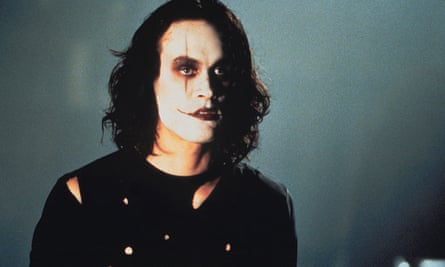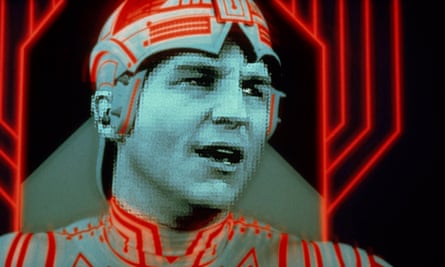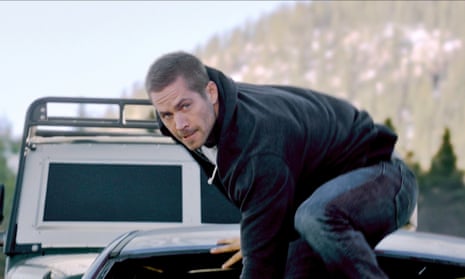It used to be the case that if a lead actor died mid-movie, film-makers had a limited range of options available to them. When Tyrone Power died of a heart attack on the set of Solomon and Sheba in late 1958, having shot 75% of his scenes, he was replaced, in all but a few long shots, by Yul Brynner (a hirsute Yul Brynner, mind). By contrast, after Marilyn Monroe died before completing Something’s Got to Give, the entire movie was unceremoniously shelved. Natalie Wood’s final film, Brainstorm, was completed using rewrites, reshoots and body doubles for Wood, while in cheapo-maestro Ed Wood’s Plan Nine From Outer Space, the absence of the late Bela Lugosi was compensated for in characteristic Wood lo-fi style by deployment of a completely different actor hiding his face with a vampire cape.
Times change, and with the seventh Fast and Furious movie debuting (in some scenes) a completely CGI version of the late Paul Walker – killed in a November 2013 car crash before filming was completed – we may have reached the point where it does not matter as much if your lead actor dies. It’s been a long time in the making, but here are some landmarks in the history of digitally rendered human actors.
Brandon Lee in The Crow

Accidentally killed by a misfiring prop gun with three days of shooting remaining on Alex Proyas’s 1994 dystopian action-noir, final scenes with Lee were completed using a digitally composited version of his face superimposed on the head of a stunt double. Audiences could hardly tell the difference and the movie was a critical and commercial smash.
Oliver Reed in Gladiator (2000)
After yet another night of drinking, arm-wrestling, hell-raising and champion-level tiresomeness, Reed turned up his toes mid-shoot with a number of crucial scenes still to be shot. Director Ridley Scott used outtakes to create a digital face that was then pasted on to the head of a stand-in. With dialogue still to be added, there was also the need to animate Reed’s mouth realistically. And seamlessly, it turned out: audiences were largely unable to distinguish the scenes in question.
Andy Serkis as Gollum
Nobody needed to die for Peter Jackson’s Gollum to come into being, but Andy Serkis certainly added life to this entirely digitally rendered version of Tolkien’s malevolent homunculus, subjecting himself to an entire motion-capture body-suit in order to add a persuasive physicality to the role. Serkis deserves his own chapter (alongside Jackson’s Weta Digital effects outfit, whose paw-prints are all over this story) in the history of digitally rendered characters underpinned by convincing human (or simian) emotions, having also been the actor behind Jackson’s King Kong and lead ape Caesar in the Planet of the Apes franchise-reboot.
Young Jeff Bridges vs Old Jeff Bridges in TRON: Legacy

Returning to Tron after a nearly 30-year absence, Jeff Bridges is confronted by an eerily lifelike version of his younger self, circa 1985. In order to convince audiences that his original Tron character had aged a little, but realistically, scans of Bridges’s younger, fleshier face were extracted from Against All Odds, made two years after Tron. These were mixed with Bridges’s facial movements – recorded by 134 motion capture dots – a process refined during the making of James Cameron’s Avatar (also using Weta Digital), and then superimposed on the head of stunt double John Roardon. A similar process was used to create the younger version of Patrick Stewart of X-Men, and to insert a retro 1984 version of Arnold Schwarzenegger opposite non-digital, flesh-based, mere mortal 2015 Arnie, for Terminator Genisys.
Bruce Lee’s Johnnie Walker ‘Change the Game’ commercial
With the blessing of the Bruce Lee estate, and with the aid of his daughter Shannon Lee, London-based VFX company The Mill spent nine months studying and digitally copying the facial movements of the late kung fu superstar from his old movies before using an organic style of computer-assisted hand-animation – with as little motion-capture as possible – to make the entirely fake digital Lee look as human as if he were still alive and high-kicking. The hardest part to pull off was the eyes, and particular pains were taken in recreating their musculature and expressiveness.
Paul Walker in Furious Seven
Walker’s death in a car crash before shooting was finished necessitated completing his role with a combination of methods old and new. Besides rewrites and soundtrack adjustments, a number of stunt doubles and lookalikes, including Walker’s two brothers Cody and Caleb, were used for long shots and rear shots, along with shots of Walker himself from previous films in the franchise, while a digitized version of Walker’s face was superimposed on to a body double for dialogue scenes.

Comments (…)
Sign in or create your Guardian account to join the discussion